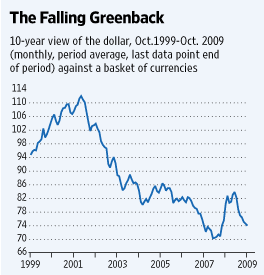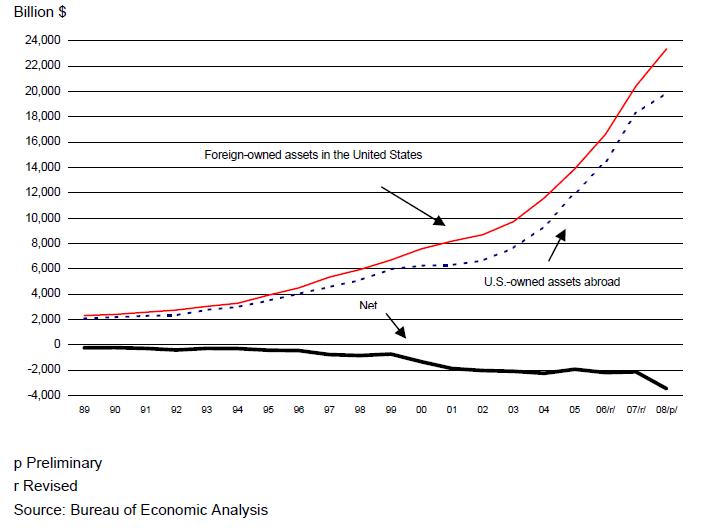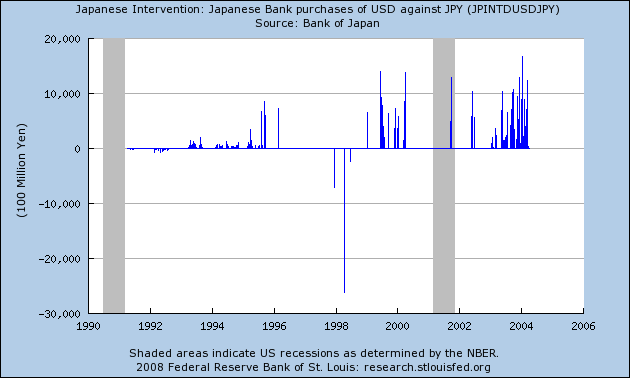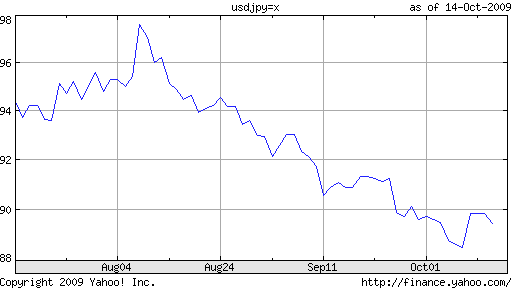US Trade (USA/ American Trade): US Import (USA/ American Imports), US Export (USA/ American Exports)
During the days of the British Empire the UK economy was the largest in the world and the first to industrialise (or industrialize, ushering in the Industrial Revolution). Although it has declined in significance since, the UK is still the sixth largest economy in the world by purchasing power parity.
It is a member of the G7 (now expanding to the G8 and G20), the European Union (although not the European Economic and Monetary Union -EMU – or Euro) and the OECD (Organisation for Economic Cooperation and Development). It is also the founding member of the Commonwealth, the association formed by former British Empire states.
The British Economy is one of the most globalised (or globalized) economies in the world, thanks in no small part to the City of London, considered to be the largest financial center in the world.
The economy of the United Kingdom of Great Britain includes the economies of England, Scotland, Wales and Northern Ireland. The Isle of Man and the Channel Isles are part of the British Isles and have offshore banking status.
The Bank of England had cut interest rates to 1.0 per cent by the end of 2008, and that is expected to drop to 0.5 per cent for most of 2009 and 2010.
UK budget deficit stood at 5.3 per cent of GDP in 2008. With economic stimulus packages and bank bailouts being worked on, that is expected to balloon to 11.3 per cent of GDP in 2009 and 13 per cent of GDP in 2010.
In 2008, the UK had the 43rd largest relative national public debt, at 47.2 per cent of GDP. This figure could rise to 58.5 per cent of GDP by 2009 and 70 per cent of GDP in 2010, thanks to the projected budget deficits of 2009-2010.
Inflation had ramped up to 3.6 per cent in 2008, but has dropped back with the economic collapse and is expected to be 0.4 per cent in 2009 and 0.8 per cent in 2010. It had the 58th lowest inflation rate in the world at end 2008.
The 3-month Treasury rate has similarly dropped, from 5.5 per cent in 2008 to an expected 1.3 per cent in 2009 and 2010.
The unemployment rate had reached 6.3 per cent in the UK by the end of 2008 according to the Office of National Statistics, reaching close to 2 million unemployed. This figure is likely to grow to the 2.5 million – 3 million figures, or 8-10 per cent.
The UK has the third highest current account deficit in the world of US$186 billion. It has a large trade deficit in manufacturing and has become a net importer of energy and North Sea extraction declines. It runs $468.7 billion of exports (9th in the world export rankings) and $654.7 billion of imports (6th in the world).
It was the 2nd largest recipient of foreign direct investment (FDI) in 2007 (although the figure has dropped since), and one of the most competitive in Europe for business and tax.
UK GDP Data
The UK economy is the 5th largest in the world and 2nd largest in Europe with GDP of US$2.279 trillion (6th largest by PPP GDP).
GDP growth was 1.1 per cent in 2008 but it is expected to contract in coming years, with GDP growth forecasts of -3.2 per cent in 2009 and -1.1 per cent in 2010.
The UK has a population of 61m and a GDP per capita is US$37.4k, which makes it the 30th richest country in the world, above the European Union average of US$33.8k.
UK GDP by industrial sector:
* Services Sector – 76.2 per cent of UK GDP
* Industry & Manufacturing – 22.8 per cent of UK GDP
* Agriculture – 0.9 per cent of UK GDP
UK Economic History
The UK was once the largest economy in the world. At its peak during the nineteenth century it ran the British Empire – and one quarter of the world. Its global mercantile system transported people, resources and capital, generating vast profits for the Empire. Since the end of World War II the UK has been weakened by the costs of war, the end of the Empire and the Republic of Ireland leaving the United Kingdom. In recent times, there have been two periods of strong economic performance. The first resulted from the Prime Ministership of Margaret Thatcher, who famously broke the unions and ushered in free market reforms that helped the UK to shed its ‘Sick Man of Europe’ mantle. The second came about when the ‘New Labour’ government came to power in 1997, with Gordon Brown serving as both Chancellor of the Exchequer Gordon Brown and later Prime Minister, inheriting and expanding a period of continuous economic growth from 1992 to 2007.
UK Economy 2001-2007
The UK experienced a double bubble in both housing and the stock markets from 2001 – 2007.Credit was cheap and easy, regulation lax and rules broken. Fuelled by mortgages of up to 125 per cent, house prices tripled in some areas during that period and the London Stock Exchange (LSE) reached record highs. Home prices peaked in the third quarter of 2007 and the long decline set in. Unable to get wholesale funding UK bank Northern Rock was forced to turn to the Bank of England as lender of last resort in September 2007. This led to the first run on a British bank in generations, and forced the government eventually to nationalise the bank.
UK Economy 2008
Northern Rock did not mark the end of the British government’s involvement in the financial sector.It was forced to nationalise Bradford & Bingley, help Alliance & Leicester and HBOS get bought, and provide capital, funding and underwriting worth more than 400 billion GBP to both over-leveraged giants like RBS and Lloyds TSB, and relatively stronger groups like Barclays, HSBC and Standard Chartered. By Q2 2008 the UK was officially in recession and Sterling had dropped more than 30 per cent against the other main currencies. With consumer confidence dropping and unemployment rising, the auto and retail sector were the next victims of recession. Household names in the High St including Woolworths, Zavvi (the former Virgin Megastores), MFI, Adams and Waterfords Wedgewood went into receivership by Christmas 2008.
UK Economy 2009
The British economy in 2009 was declining at an even quicker rate than originally suspected.All sectors of the UK economy seem to be struggling, with consumer confidence, the housing market, employment and manufacturing either at the lowest point, or dropping faster than ever previously recorded. Seeking to overcome blame for the recession and the fall out from his previous statements that he had tamed the ‘Boom and Bust’ cycle, Prime Minster Gordon Brown announced a major economic stimulus package. It will add to already high debt levels above 40 per cent of GDP, leading to speculation that Britain’s sovereign debt ratings would be downgraded and to further slides int eh value of sterling. By the end of 2009, the UK economy is expected to have contracted 3.2 per cent (although some economists are revising that figure further downwards), with UK public debt rising to a staggering 70 per cent.
UK Economy 2010 Forecast
Forecasting in the midst of such economic uncertainty and financial upheaval is, to put it mildly, a challenge.The consensus for 2010 has now shifted to flat to negative growth. Forecasts range from 0 per cent to – 5 per cent growth, with the median in the -1 to -2 per cent range, although most economists state that major downside risks remain. The Bank of England Interest Rate, Inflation and the three month Treasury rate are expected to stay low at under 1 per cent, under 1 per cent and 1.3 per cent respectively. The budget balance is forecast to grow dangerously to -13 per cent of GDP, which would take UK national public debt above 70 per cent of GDP.
UK Monetary and Fiscal Policy
As of Q1 2009, the Bank of England has already cut Interest Rates to a historic low of 1.0 per cent, with a drop to 0.5 per cent or even 0 likely.
Further measures are probably needed, and this will include quantative easing, in other words printing more money.
During Gordon Brown’s stint as Chancellor, the Labour Party officially adopted the Golden Rule and the Sustainable Investment Rule in fiscal policy, which state that deficit over an economic cycle should only be used for future investment, and only up to a national debt of 40 per cent of GDP.
By the end of 2008 estimated public debt had already risen to 42 per cent, and could rise to 70 per cent of GDP by 2010, meaning that the rules have gone out of the window as fighting the recession takes priority. Keynesian economics says this is the right thing to do, but it leaves the British government finances dangerously over leveraged – and over leverage was, after all, what got us into this mess in the first place.
UK Real Estate, UK Property Market
The UK real estate or property market has been growing for most of the years since 1992. Between 2000 and 2007 alone, some areas saw median prices trebling in value. Since the third quarter of 2007, prices have fallen every month, reaching record levels of price drops and record lows in terms of new sales.
Speculators were a big part of the growth of that market, with Buy-To-Let buyers making up as much as 50 per cent of house purchases in London before the crash. This effectively priced new home buyers out of the market.
Although prices have now dropped back to affordable levels, fears of further falls, rising unemployment and reluctance among beleaguered banks to lend continue to restrict the market.
UK Tax
The UK taxation system involves taxes applied by both the central government and local government. Central government collects tax through Her Majesties Revenue and Customs (HM Revenue & Customs) department, in the form of income tax, national insurance, VAT (value added tax), corporation tax and fuel duty.
Local government receives grants from central government, and additionally collects revenue from business rates, council tax and fees such as on-street parking.
Tax as a percentage of GDP reached a percentage of GDP reached 46 per cent as of 2005-2006, according to HM Treasury.
















 Challenges Facing Germany
Challenges Facing Germany